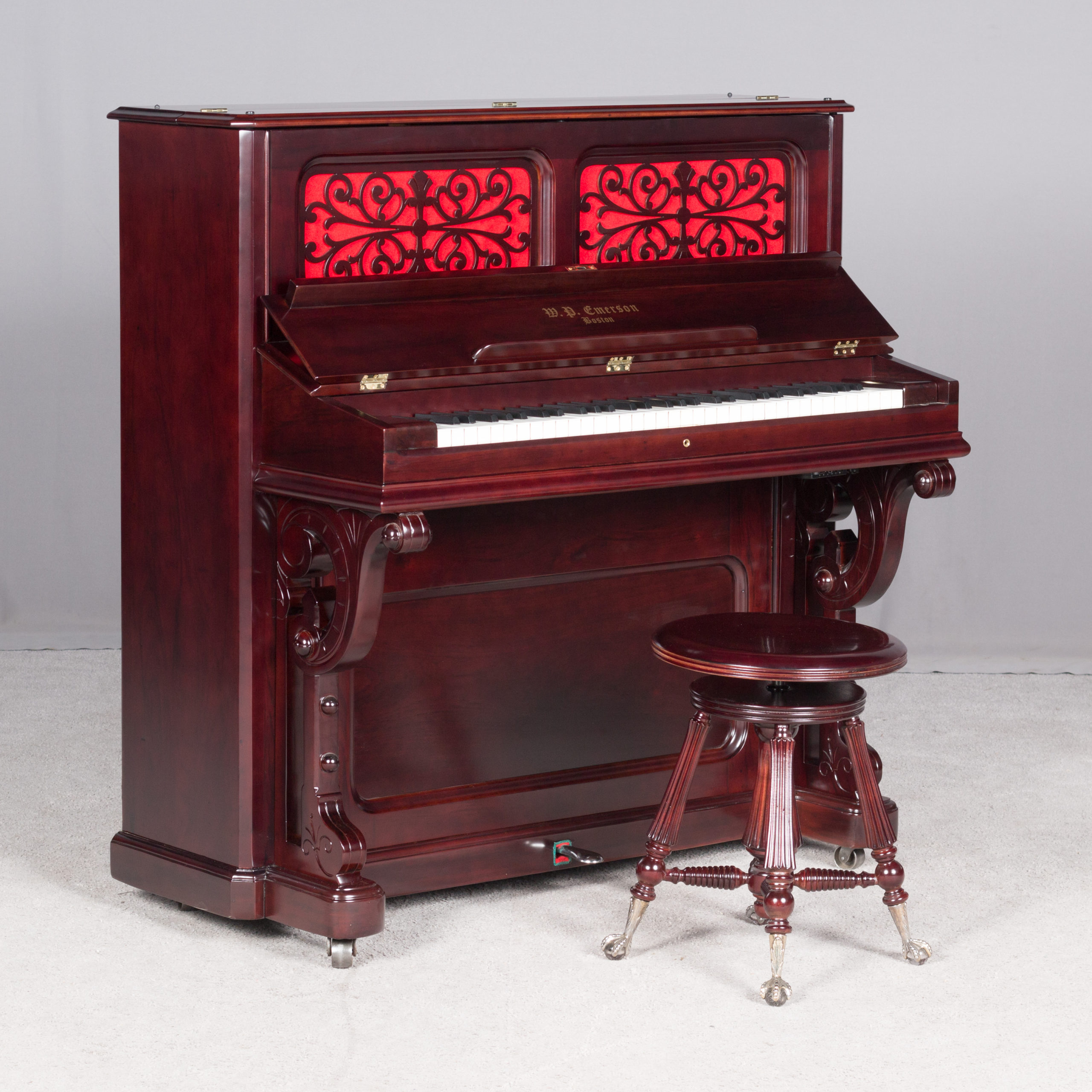

With vertical pianos, vacuum the piano’s back, and inside the bottom cavity where the pedals are attached. For grand pianos, have your piano technician clean under the strings and inside the piano. Your local hardware store will likely have touch-up felt-tip markers that match the finish of your piano, and a brass cleaner for the pedals.
Clean the piano’s case thoroughly and, if possible, touch up any cosmetic blemishes. By presenting the piano in its best condition, you can remove doubts and unnecessary obstacles to the sale. Most potential buyers, knowing little or nothing about piano mechanics, will be concerned that the defects they see or hear are symptoms of more serious problems. Keep in mind that when a piano is significantly out of tune, has notes that don’t work properly, or has other obvious defects - even small ones - the chance of being able to sell it is dramatically reduced. (An exception would be a piano that you know to be untunable and unplayable, and offered for sale only to someone who intends to restore it.) We realize that you may not want to put any more money into an instrument you’re selling, but spending a few hundred dollars and a couple of hours can produce a good return in both the selling price of the piano and in the ease of sale. If you expect to sell your piano for over $1,500, we strongly suggest that you have the piano tuned and its condition inspected before putting it up for sale. Here’s a checklist of what to do to prepare your piano for sale: Performance condition: If you play, how would you describe your piano’s performance to a shopper? If you don’t play, ask your piano technician how he or she would describe it. Cosmetic condition: Look the piano over closely with a flashlight and note any visible wear or damage. Relative quality of brand and model: See earlier discussion. 161610 HARRINGTON PIANO FOR SALE SERIAL NUMBER
Serial number and age: See earlier discussion. Model: The model designation or number is usually found just inside the lid or on the back of an upright (vertical) piano, and usually under the music desk of a grand. Make: The brand name is found on the fallboard (keyboard cover) and/or on the cast-iron plate. You can use the checklist below to help you form answers to the questions potential buyers will ask, and determine how best to articulate those answers in a way that will place your piano in its best light. Weave this information, along with the history of your particular instrument and your experience of it, into a narrative that presents the facts about your piano in a persuasive context. If your piano has outlasted its manufacturer, you can research the brand’s history online. “A Map of the Market for New Pianos,” also in Piano Buyer, will help you determine the quality of your piano relative to other brands in the marketplace. 
Piano Buyer’s “Brand and Company Profiles” has descriptions of currently manufactured pianos that usually include their features, advantages, and benefits, as well as the history of the manufacturer.
Because people tend to sell when moving, time pressure is involved - as the moving date approaches, often the asking price must be cut drastically.įirst, if the company that made your piano is still in business, learn the features, advantages, and benefits of your piano brand and model when compared to other pianos the shopper may be considering.  The Internet, especially websites such as Craigslist and eBay, makes it easier than ever for sellers to advertise at little or no cost. In many cases, these instruments were inherited from the boomers’ own parents and are now 50 or more years old. Baby boomers, retiring and downsizing, are flooding the market with the pianos their kids took lessons on. Digital pianos have become so advanced in tone and touch, and so competitive in price, that for many on a limited budget, a new digital piano may be a better buy than a used acoustic. Globalization and the computerization of manufacturing have made inexpensive, new, high-quality consumer-grade pianos from China and Indonesia abundantly available, leaving lower-quality used instruments from previous eras with little value. Several conditions - some inherent to used-piano sales and some specific to current times - have tended to increase supply and/or drive down the prices of used pianos: Used pianos for sale far outnumber shoppers to buy them, making it a buyer’s market. Selling a used piano can be a challenge: Since the Recession, used pianos at all price levels have plummeted in value.
The Internet, especially websites such as Craigslist and eBay, makes it easier than ever for sellers to advertise at little or no cost. In many cases, these instruments were inherited from the boomers’ own parents and are now 50 or more years old. Baby boomers, retiring and downsizing, are flooding the market with the pianos their kids took lessons on. Digital pianos have become so advanced in tone and touch, and so competitive in price, that for many on a limited budget, a new digital piano may be a better buy than a used acoustic. Globalization and the computerization of manufacturing have made inexpensive, new, high-quality consumer-grade pianos from China and Indonesia abundantly available, leaving lower-quality used instruments from previous eras with little value. Several conditions - some inherent to used-piano sales and some specific to current times - have tended to increase supply and/or drive down the prices of used pianos: Used pianos for sale far outnumber shoppers to buy them, making it a buyer’s market. Selling a used piano can be a challenge: Since the Recession, used pianos at all price levels have plummeted in value.







 0 kommentar(er)
0 kommentar(er)
